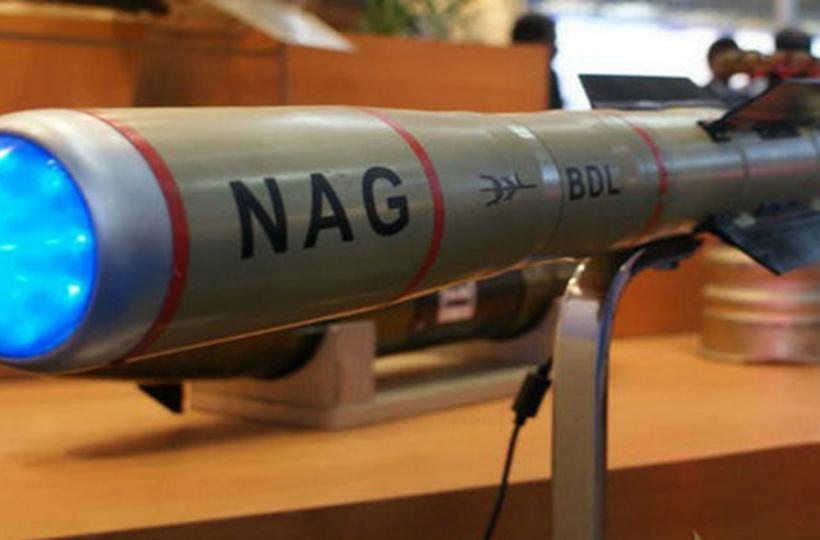India’s indigenous Nag Anti-Tank Guided Missile (ATGM) and the variant of HELINA (Helicopter-launched NAG) Weapon System called ‘Dhruvastra’ are set to be inducted into the Indian army and Indian Air Force (IAF) after clearing all the trials. Both the Nag ATGM and Helina (Dhruvastra) missiles are developed by Defence Research and Development Organisation(DRDO) and manufactured by Bharat Dynamics Limited(BDL). Nag is the surface-to-air missile and Dhruvastra is the air-to-surface missile.
About Nag ATGM:
- NAG also known as Prospina, is a third generation Anti-Tank Guided Missile with Fire and Forget top attack capability. Nag ATGM developed under the integrated guided missile development programme (IGMDP), which also includes four other missiles Agni, Akash, Trishul and Prithvi.
- The Nag has an operational range of up to 4 km and is armed with a tandem High- Explosive Anti-Tank (HEAT) warhead.
- Nag ATGM measures approximately 1.834 meters in length, has a diameter of 0.158 meters, and weighs around 44 kilograms.
About Helina (Dhruvastra):
- Helina is an Air to Surface Missile system launched from Advanced Light Helicopter (ALH).ALH is fitted with two Twin launchers, one on each side, each carrying eight missiles.
- It has the operational range up to 7km and length of 1.946m, and a diameter of 0.150m.
- It has a High Resolution Imaging Infrared Seeker (IIR) operating in the Lock on Before Launch(LOBL) mode and capable of automatic target detection and tracking in adverse weather conditions.
Note: In 2022, DRDO has successfully flight tested at high-altitude ranges as part of user validation trials.




 Haryana Assembly Passes Resolution to Co...
Haryana Assembly Passes Resolution to Co...
 Which Country is Known as the Land of Ch...
Which Country is Known as the Land of Ch...
 Operation Hawkeye: US and Jordan Strike ...
Operation Hawkeye: US and Jordan Strike ...







